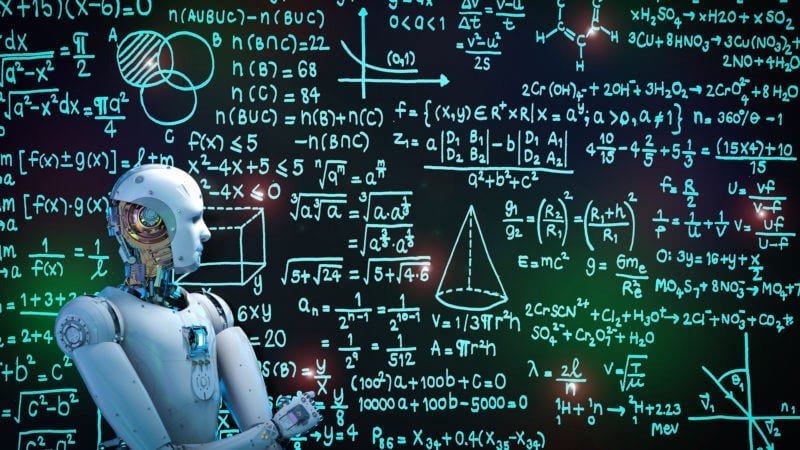This blog examines how mathematics and algorithms form a hidden engine behind the behavior of an intelligent agent. While the agents seem cleverly acting, they rely on strict mathematical models and algorithmic logic. Differential equations monitor change while Q-values control learning. These invisible mechanisms allow agents to function intelligently and autoom.
Agents have been from the management of cloud workloads to navigation in operation. When connected to the MCP server (model Context Protocol), they simply respond; They predict, learn and optimize in real time. What drives this intelligence? It’s not magic; It’s mathematics, quietly controls everything behind the scenes.
The role of calculation and optimization is revealed in allowing real -time adaptation, while algorithms transform data inators and learning experience. Finally, the reader will see the elegance of mathematics in how agents behave and trouble -free orchestration of MCP servers
Mathematics: They make agents adapt in real time
It operates in the dynamic actors of the Envatiques, which is constantly adapting to changing contexts. The calculation helps them to model and respond smoothly and intelligently.
Monitoring the change over time
To predict how the world develops, agents used differential equations:

This describes how the status of Y (eg CPU load or latency) changes over time, affected by current X inputs, the current state of YA Time T.


The blue curve represents the state y
For example, the latency of agents monitoring uses this model to actively anticipate the spikes and Liveonde.
Finding the best turn
Suppose the agent is trying to effectively distribute traffic on servers. Forms it as in a problem with minimization:
You want to find optimal settings, looking for where the gradient is zero:


This diagram visually demonstrates as agents find Optimal setting by searching for a point where Gradient is zero (∇f = 0)::
- Outline lines occupy surface performance (eg latency or load)
- The red arrows show Negative direction of gradientThe path of the steepest descent
- Blue dot on (1, 2) Indicates minimumwhere is the gradient zero, optimal agent configuration
These brands have a performance sweet place. It is called the agent not to add up if the conditions do not.
Algorithms: Transforming logic into learning
Mathematical Models “As change. Algorithms help agents to decide ”what to do on. Strengthening learning (RL) is a conceptual frame where algorithms such as Q-Learning, State-Action-Reward-Stage (Sarsa), Deep Q-Networks (DQN) and political gradient methods are used. Through these algorithms, learn from experienced agents. The following example shows the use of the Q-Learning algorithm.
Simple agent Q-Learning in action
Q-Learning is an algorithm of learning amplification. The agent finds out which action is the best court to receive the most rewards over time. It updates the Q-tabulka using the Bellman equation to keep optimal decision-making for a period of time. The Bellman equation helps analyze long -term results in creating better shorts.


Where:
- Q (S, A) = The value of the acting “A” in the “S” state
- R = Immidate Reward
- γ = discount factor (there will be valuable future rewards)
- S ‘, A ′ = Next Status and Possible Actions


Here is an example of RL agent who learns through experiments. The agent examines 5 states and selected between two actions to eventually achieve the target status.


Exit:
![]()
![]()
This little agent gradually learns which actions help him to achieve target 4. Balance the survey with exploitation using Q. This is a key concept in strengthening learning.
More coordination agents and how MCP servers connect together
More agents often cooperate in the real world systems. Langchain and Langgraph Help create structured modular applications using language models such as GPT. They integrate LLMS with tools, APIs and databases to support decision -making, perform tasks and complex workflows, beyond simple text generation.
The following involved diagram shows the Langgraph agent’s interaction loop with the environment through the model context protocol (MCP) and uses Q-LEARNING to iteratively optimize its decision-making policy.




![]()
![]()
In distributed networks, learning amplification offers a strong paradigm for adaptive overload control. ENVIVIVA intelligent agents, every autonomously managing operation across the designated network links, seeks to minimize latency and loss of packets. These agents observe their condition: tail length, packet arrival and use of connection. These are the actions performed: adjusting the speed of transmission, preferring operation or routing to less congested paths. The effectiveness of their actions is evaluated by a reward: higher for lower latency and minimal loss of packets. Through Q-Learning, each agent continuously improves its control strategy and dynamically adapts to real-time network conditions for optimal performance.
Closing thoughts
Guess or respond instinctively agents. They observe, learn and adapt to deep mathematics and intelligent algorithms. Changing the model of differential equations and behavior optimization. Strengthening learning helps decidal agents, learns from the results and exploration of balance with exploitation. Mathematics and algorithms are invisible architects for intelligent behavior. MCP servers combine, synchronize and share data and maintain agents.
Each intelligent movement is driven by a string of equations, optimization and protocols. Real magic is not an guess, but the quiet accuracy of mathematics, logic and orchestration, the core of modern intelligent agents.
Recovery
MAHADEVAN, S. (1996). Average learning strengthening of reward: Foundation, algorithms and empirical results. Machine Learning, 22, 159–195. https://doi.org/10.1007/bf00114725
Grether-Murray, T. (2022, 6 November). Mathematics for AI: From machine learning to deep learning. Medium. https://medium.com/@tgmmurray/the-math-behind-ai-from-machine-learning-to-to-learning-5A49C56D4E39
Annanthaswamy, A. (2024). Why the machines learn: elegant mathematics for modern AI. Dutton.
Share:

